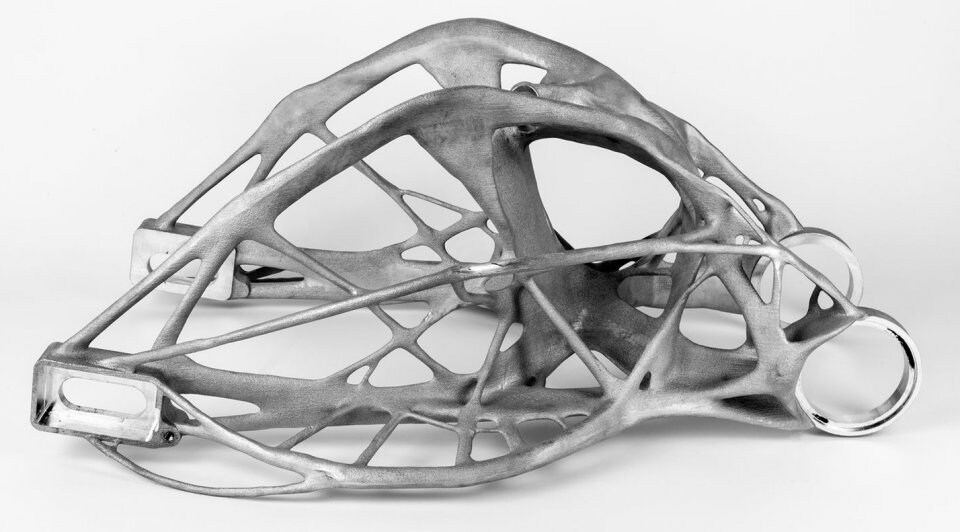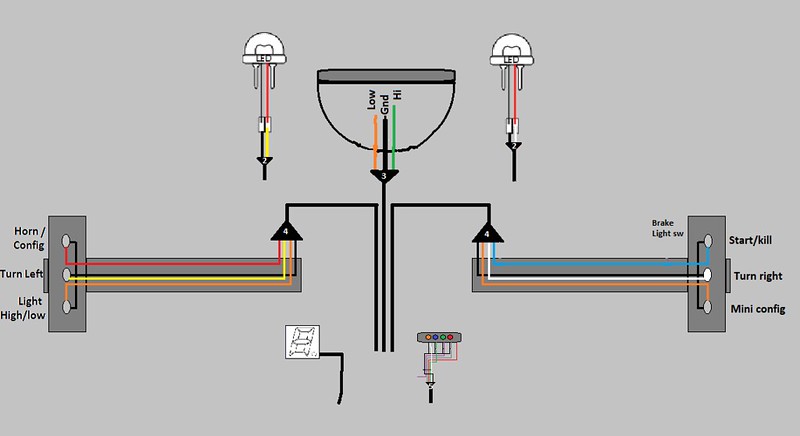 A step up in safety too.
A step up in safety too.
Image from the web:

I 3D-printed these headlight-brackets to test headlight placement, and I'll make new ones in aluminum with an M8 threaded hole for the Mo.blaze tens'.

Required reading for all forum users!!!
Welcome!
Register to access the full functionality of the GSResources forum. Until you register and activate your account you will not have full forum access, nor will you be able to post or reply to messages.
A note to new registrants...
All new forum registrations must be activated via email before you have full access to the forum.
A Special Note about Email accounts!
DO NOT USE sbcglobal.net, att.net, bellsouth.net or email.com email addresses when registering for the forum! Email that our system sends out to these email servers is treated as SPAM and you will never receive your activation email, or any other email that our system may send out. Use an email address from gmail.com or some other email server.
A note to old forum members...
I receive numerous requests from people who can no longer log in because their accounts were deleted. As mentioned in the forum FAQ, user accounts are deleted if you haven't logged in for the past 6 months. If you can't log in, then create a new forum account. If you don't get an error message, then check your email account for an activation message. If you get a message stating that the email address is already in use, then your account still exists so follow the instructions in the forum FAQ for resetting your password.
Have you forgotten your password or have a new email address? Then read the forum FAQ for details on how to reset it.
Any email requests for "can't log in anymore" problems or "lost my password" problems will be deleted. Read the forum FAQ and follow the instructions there - that's what we have one for...
New users should be sure to read the FAQ as well as the posts in the Announcements forum. This will answer many of the questions you may have about how this forum works.
Before posting questions in the forums be sure to use the forum search function!!! Odds are your question has already been asked and answered before. And when posting, please make sure that you post to the correct forum.
Finally, be sure to check out BassCliff's website here. He has useful information that can't be found on this site. His welcome page containing useful GS information can be found here. Be sure to check it out!
If you are a returning visitor to the forum and can't log in using your old forum name and password, chances are your account is deleted. Just create a new forum account and you should be all set.
 A step up in safety too.
A step up in safety too.














 I don't have anyone to compare myself to, as the guy who owns the CNC only uses it for wooden cabin signs
I don't have anyone to compare myself to, as the guy who owns the CNC only uses it for wooden cabin signs  I use Fusion360 (non commercial license) for modelling 3D printed parts. They arre printed via Ultimaker Cura. For CNC, I used the software my friend already had, Vectric Aspire for modelling and setting toolpath etc., and NC Studio for controlling the CNC router. About 25 years ago, I got hold of a copy of 3D Studio max and did some 3D modelling (waiting 30 hours for a picture to render..), and adapting basic understanding of 3D modelling to CNC/3D printing wasn't too much work.
I use Fusion360 (non commercial license) for modelling 3D printed parts. They arre printed via Ultimaker Cura. For CNC, I used the software my friend already had, Vectric Aspire for modelling and setting toolpath etc., and NC Studio for controlling the CNC router. About 25 years ago, I got hold of a copy of 3D Studio max and did some 3D modelling (waiting 30 hours for a picture to render..), and adapting basic understanding of 3D modelling to CNC/3D printing wasn't too much work. (Also; had to google 8 axis CNC.. looks awesome
(Also; had to google 8 axis CNC.. looks awesome  )
)



 Wire routing_3 by Lars Krogh-Stea, on Flickr
Wire routing_3 by Lars Krogh-Stea, on Flickr Noisemaker_koblingsskjema by Lars Krogh-Stea, on Flickr
Noisemaker_koblingsskjema by Lars Krogh-Stea, on Flickr IMG_20210517_125303 by Lars Krogh-Stea, on Flickr
IMG_20210517_125303 by Lars Krogh-Stea, on Flickr Wiring front by Lars Krogh-Stea, on Flickr
Wiring front by Lars Krogh-Stea, on Flickr Wire routing_1 by Lars Krogh-Stea, on Flickr
Wire routing_1 by Lars Krogh-Stea, on Flickr Started in 2015, and still the bike is not roadworthy (even though it was for a couple of weeks, before I started the fork swap).
Started in 2015, and still the bike is not roadworthy (even though it was for a couple of weeks, before I started the fork swap). Last week I dug out the old GS from the garage and rigged a workshop in one of the sheds. Spent the evening there today, and realized how relaxing it is
Last week I dug out the old GS from the garage and rigged a workshop in one of the sheds. Spent the evening there today, and realized how relaxing it is 

.png)
Leave a comment: